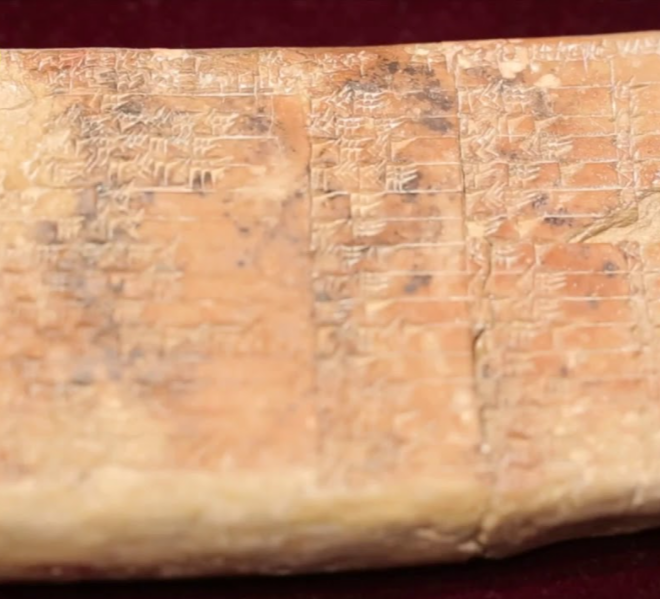
Researchers have deciphered ancient Babylonian tablets that predict future disasters.
The 4,000-year-old artifacts were found more than 100 years ago in modern day Iraq but have only now been completely translated and linked to astronomical events.
Ancient Babylonians had a special interest in the cosmos, especially the moon, and associated lunar eclipses with natural disasters and historic events.
Although the tablets were added to the British Museum’s collection between 1892 and 1914, this revelation marks the first time the cuneiform has been completely translated and linked to astronomical predictions and omens.
The omens predicted harsh environmental disasters including one that said: ‘In spring a locust swarm will arise and strike the crops/my land’s crops. There will be a dearth of food.’
It also talked about revolts upon the land, both from foreign adversaries and weather, the study revealed.
One deciphered omen said: ‘There will be rain and floodwater and Adad will devastate the threshing floors.
There will occur an attack by an Elamite army, a Gutian army, on the land. It will destroy a land that revolts. The land will perish.’
A separate omen added: ‘As for a land that revolts, the enemy will demolish cities, city walls, my city walls, the walls of our city.’
The tablets are believed to come from Sippar – a city that flourished during the Babylonian Empire in what is now Iraq and date back to the middle and late Old Babylonian periods from about 1894 to 1595 BC.
The researchers suggested its possible that ancient people may have relied on past experiences to determine any omens the lunar eclipses predicted and this discovery makes these slabs the ‘oldest examples of compendia of lunar-eclipse omens yet discovered.’
Ancient Babylonians learned when to expect a lunar eclipse and often claimed it foretold the death of their kind and would conduct rituals to save the current monarch from his alleged fate, according to the researchers.
Researchers worked to decipher the cuneiform language, which is one of the oldest known forms of writing that means ‘wedge shaped’ because people used a reed stylus to create the wedge-shaped marks on clay tablets.




